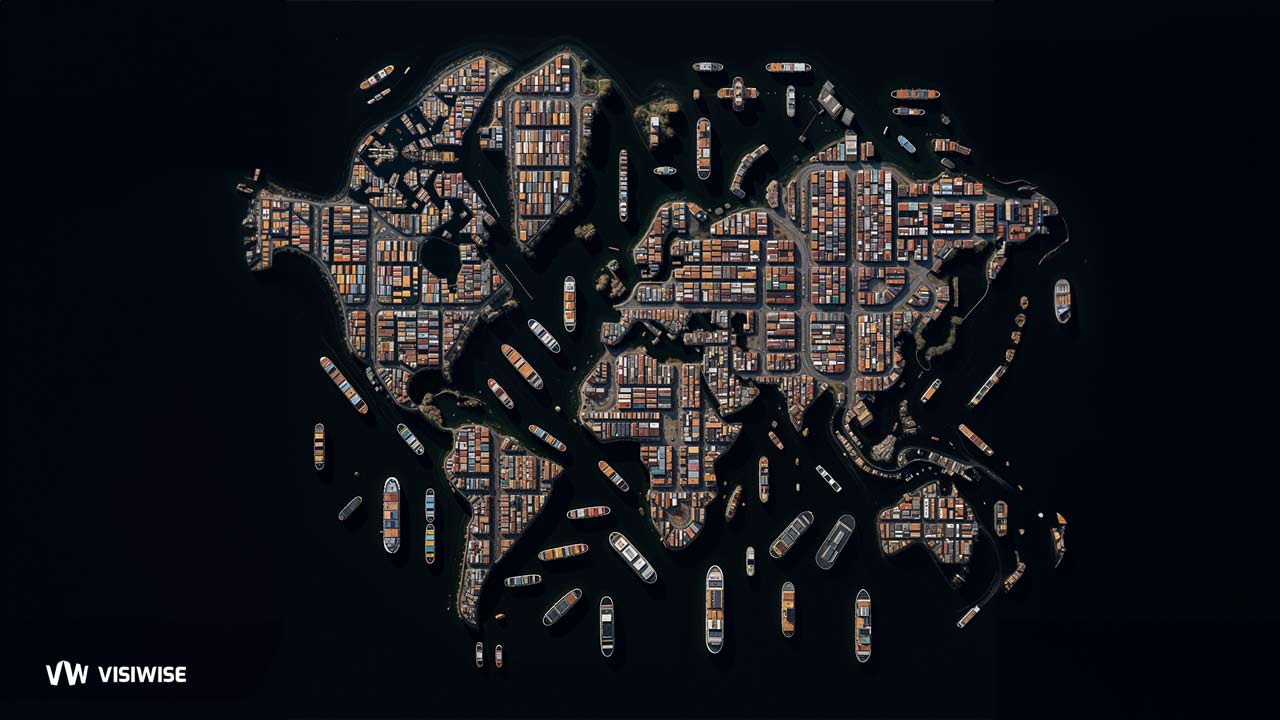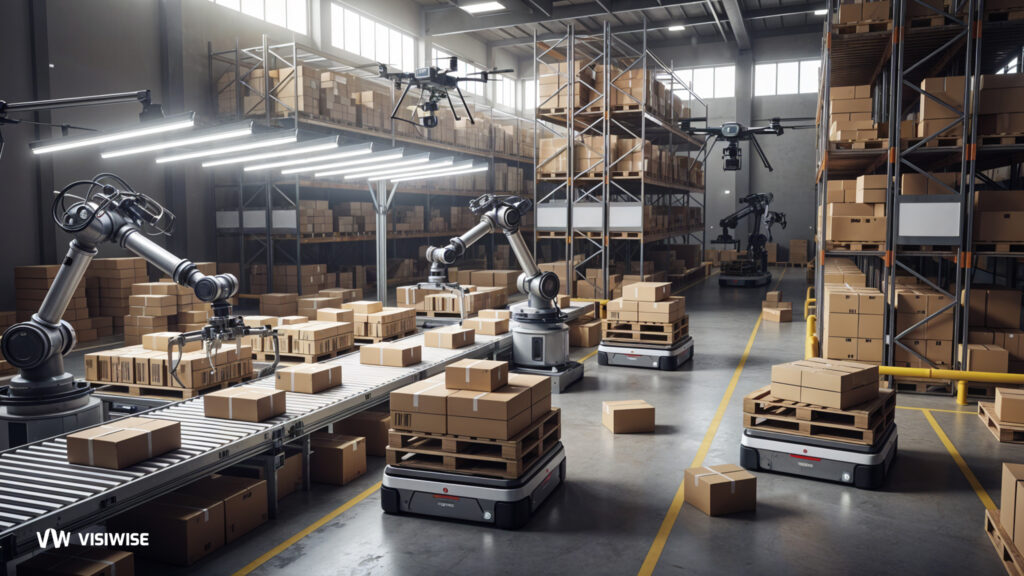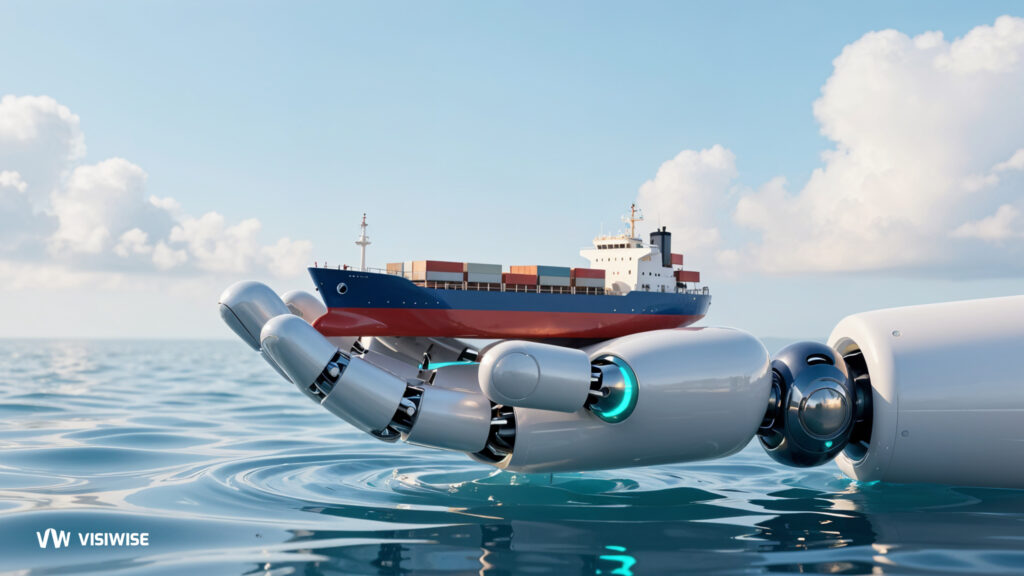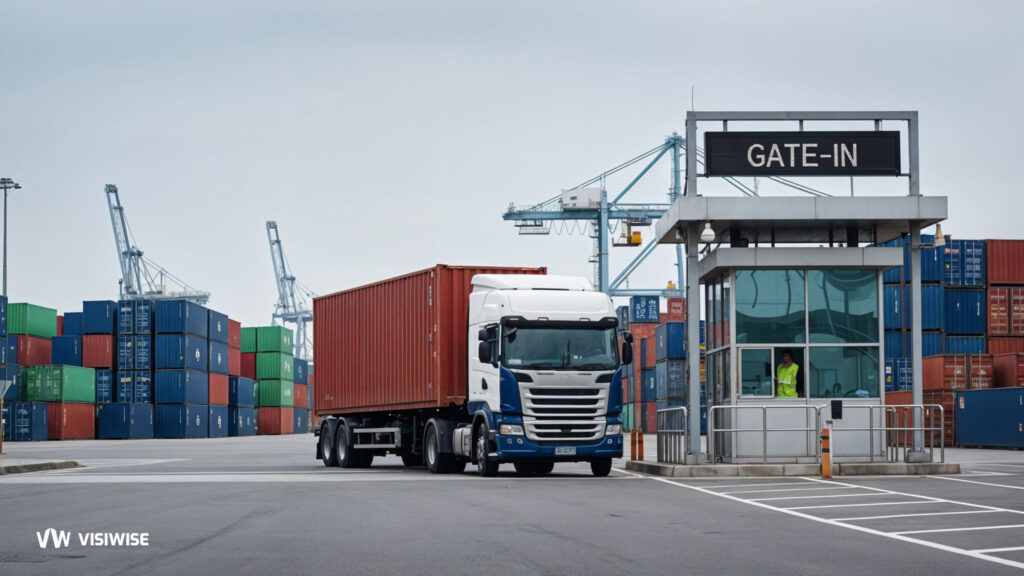The maritime industry forms the backbone of global trade, with over 80% of world trade by volume and over 70% by value carried by sea and handled by ports worldwide. Shipping hubs are vital nodes in this vast network, acting as critical points for the transfer of goods, container handling, and logistical operations. This article explores the world’s biggest shipping hubs, examining their significance, operations, and the factors that contribute to their status as leaders in the maritime industry.
Introduction to Maritime Shipping Hubs
Shipping hubs are crucial points in the global supply chain where cargo is consolidated, transferred, and dispatched. These hubs are often strategically located to maximize efficiency in global trade routes, reducing transit times and costs. The importance of shipping hubs cannot be overstated; they serve as gateways for international trade, fostering economic growth and development in their regions.
Top Shipping Hubs in the World
- Shanghai, China
Shanghai has consistently ranked as the world’s busiest port by container volume. The Port of Shanghai is a colossal maritime hub, handling over 43 million TEUs (twenty-foot equivalent units) annually. Its strategic location at the mouth of the Yangtze River, extensive infrastructure, and advanced technology makes it a cornerstone of global trade.
Shanghai’s port complex includes several deep-water port areas, such as the Waigaoqiao and Yangshan Deep Water Port. The latter, connected to the mainland by the 32.5-kilometer Donghai Bridge, exemplifies engineering prowess and logistical efficiency, accommodating the largest container ships in the world.
- Singapore
Singapore’s port is renowned for its efficiency and strategic location at the crossroads of major shipping routes. Handling over 37 million TEUs annually, it is a key transshipment hub, connecting East-West trade routes. The port’s success is attributed to its state-of-the-art facilities, robust IT infrastructure, and proactive government policies fostering a business-friendly environment.
The Port of Singapore leverages advanced technologies like automated cranes and digital platforms to streamline operations, reduce turnaround times, and enhance overall efficiency. Furthermore, Singapore’s strong focus on sustainability and green shipping practices sets it apart as a forward-looking maritime hub.
- Shenzhen, China
The Port of Shenzhen is another Chinese maritime giant, comprising several ports like Yantian, Chiwan, and Shekou. Collectively, these ports handle around 27 million TEUs annually. Shenzhen’s proximity to Hong Kong and its location within the Pearl River Delta economic zone bolster its status as a pivotal shipping hub.
Shenzhen’s rapid growth is fueled by the region’s robust manufacturing sector, which drives substantial export volumes. Additionally, investments in infrastructure and technology have enhanced the port’s capacity and operational efficiency, making it a critical link in global supply chains.
- Ningbo-Zhoushan, China
Ningbo-Zhoushan Port is a major player in global shipping, handling over 28 million TEUs annually. Located in Zhejiang province, it benefits from deep-water berths capable of accommodating the largest vessels. The port’s integration with extensive road and rail networks further enhances its connectivity and logistical capabilities.
The port’s development strategy focuses on expanding its container handling capacity, improving intermodal transport links, and fostering technological innovation. These efforts have cemented Ningbo-Zhoushan’s position as a crucial hub in China’s maritime trade.
- Busan, South Korea
Busan Port is South Korea’s busiest and the world’s sixth-largest container port, with an annual throughput of around 22 million TEUs. Its strategic location, at the southeastern tip of the Korean Peninsula, makes it a vital transshipment hub for Northeast Asia.
Busan’s success is underpinned by its modern facilities, efficient cargo handling systems, and strong hinterland connections. The port is continually expanding its infrastructure, including the development of new container terminals and the enhancement of logistics services, to maintain its competitive edge.
- Hong Kong
Hong Kong has long been a significant maritime hub due to its strategic location, free trade policies, and excellent connectivity. The Port of Hong Kong handles approximately 18 million TEUs annually, serving as a major gateway for goods entering and leaving China.
Despite facing competition from nearby ports like Shenzhen and Guangzhou, Hong Kong maintains its relevance through its efficient port operations, advanced logistics infrastructure, and a highly skilled workforce. Additionally, Hong Kong’s status as an international financial center complements its maritime activities, offering comprehensive trade and shipping services.
- Rotterdam, Netherlands
The Port of Rotterdam is Europe’s largest and one of the world’s busiest ports, handling around 14 million TEUs annually. Its strategic location at the mouth of the Rhine-Meuse-Scheldt delta provides excellent access to the European hinterland, making it a crucial hub for continental trade.
Rotterdam’s success is driven by its state-of-the-art facilities, extensive logistics network, and commitment to innovation. The port is a pioneer in implementing smart technologies and sustainable practices, such as automated terminals and green energy solutions, positioning it as a leader in the transition towards a digital and sustainable maritime industry.
- Dubai (Jebel Ali), United Arab Emirates
The Port of Jebel Ali in Dubai is the largest in the Middle East, handling over 14 million TEUs annually. Its strategic location, connecting the East and West, and its extensive logistics infrastructure make it a vital transshipment hub.
Jebel Ali’s success is attributed to its world-class facilities, including deep-water berths, advanced terminal operations, and robust supply chain services. The port plays a pivotal role in Dubai’s economic diversification strategy, supporting the growth of trade, logistics, and manufacturing sectors.
- Qingdao, China
The Port of Qingdao is a major maritime hub in Northern China, handling around 20 million TEUs annually. Its deep-water berths and state-of-the-art facilities enable it to accommodate large container ships and manage significant cargo volumes efficiently.
Qingdao’s strategic location on the Yellow Sea, combined with its excellent connectivity to China’s hinterland, enhances its role as a key node in global supply chains. The port’s continuous investment in infrastructure and technology further bolsters its capacity and operational efficiency.
- Guangzhou, China
The Port of Guangzhou is one of China’s oldest and busiest ports, handling approximately 23 million TEUs annually. Located in the Pearl River Delta, it serves as a crucial gateway for trade in Southern China.
Guangzhou’s success is driven by its extensive port facilities, strong industrial base, and comprehensive logistics network. The port’s continuous modernization efforts, including the expansion of container terminals and the adoption of digital technologies, ensure its competitiveness in the global maritime industry.
Factors Contributing to the Success of Shipping Hubs
The success of these shipping hubs can be attributed to several key factors:
Strategic Location
Many of the world’s leading ports are strategically located along major trade routes, providing easy access to significant markets. Proximity to manufacturing hubs, natural deep-water harbors, and connectivity to extensive hinterland transport networks enhance their attractiveness as shipping hubs.
Infrastructure and Facilities
State-of-the-art infrastructure and facilities, including deep-water berths, modern container terminals, and advanced cargo handling systems, are crucial for efficient port operations. Investment in infrastructure is a common trait among leading ports, enabling them to handle large volumes of cargo and accommodate the world’s largest container ships.
Technology and Innovation
The adoption of advanced technologies, such as automated cranes, digital platforms, and smart port solutions, enhances operational efficiency, reduces turnaround times, and improves overall productivity. Leading ports are at the forefront of technological innovation, continually investing in new systems to stay competitive.
Logistics and Connectivity
Efficient logistics and strong connectivity to inland transport networks, such as road, rail, and river systems, are essential for seamless cargo movement. Leading ports have well-developed logistics services and robust intermodal transport links, facilitating the smooth transfer of goods between sea and land.
Government Policies and Support
Supportive government policies, including favorable trade regulations, investment incentives, and infrastructure development programs, play a significant role in the success of shipping hubs. Governments that prioritize port development and trade facilitation create an enabling environment for the growth of their maritime sectors.
Sustainability Initiatives
In recent years, there has been a growing focus on sustainability in the maritime industry. Leading ports are adopting green practices, such as the use of renewable energy, implementation of eco-friendly technologies, and measures to reduce emissions and waste. These initiatives not only enhance environmental performance but also improve the ports’ competitiveness and reputation.
Challenges Facing Shipping Hubs
Despite their success, the world’s leading shipping hubs face several challenges:
Environmental Concerns
Ports are significant sources of pollution, including air and water pollution, noise, and waste. The maritime industry is under increasing pressure to reduce its environmental impact and adopt more sustainable practices.
Capacity Constraints
As global trade continues to grow, many ports face capacity constraints, leading to congestion and delays. Expanding infrastructure and improving operational efficiency are critical to managing increasing cargo volumes.
Technological Disruption
The rapid pace of technological change presents both opportunities and challenges for shipping hubs. Ports must continually invest in new technologies and adapt to evolving industry standards to remain competitive.
Geopolitical Risks
Global trade is influenced by geopolitical factors, such as trade wars, tariffs, and regulatory changes. Ports must navigate these uncertainties and adapt to shifting trade patterns to maintain their status as leading shipping hubs.
Cybersecurity Threats
As ports become more digitized, they are increasingly vulnerable to cyberattacks. Ensuring robust cybersecurity measures is essential to protect critical infrastructure and maintain the integrity of port operations.
The Future of Shipping Hubs
The future of shipping hubs will be shaped by several key trends:
Digital Transformation
The continued digital transformation of the maritime industry will drive efficiency, transparency, and innovation in port operations. The adoption of technologies like blockchain, artificial intelligence, and the Internet of Things (IoT) will revolutionize cargo handling, logistics, and supply chain management.
Sustainable Practices
Sustainability will remain a central focus, with ports adopting green technologies and practices to reduce their environmental footprint. The shift towards alternative fuels, such as LNG and hydrogen, and the implementation of energy-efficient solutions will play a crucial role in the transition to a more sustainable maritime industry.
Automation and Robotics
Automation and robotics will become increasingly prevalent in port operations, enhancing productivity and reducing labor costs. Automated guided vehicles, robotic cranes, and drones are among the technologies that will transform cargo handling and logistics processes.
Resilience and Adaptability
Ports will need to enhance their resilience and adaptability to cope with disruptions, such as natural disasters, pandemics, and geopolitical shifts. Building robust infrastructure, diversifying supply chains, and implementing flexible operational strategies will be essential for maintaining stability and continuity in port operations.
Collaborative Partnerships
Collaborative partnerships between ports, shipping lines, and logistics providers will become more important in optimizing supply chains and improving efficiency. Shared data platforms, collaborative planning, and integrated services will enhance coordination and streamline operations across the maritime industry.
Transforming with Real-Time Visibility Platforms
The world’s major shipping hubs are undergoing a transformation with the adoption of real-time visibility platforms. These platforms utilize cutting-edge tracking technologies like GPS and IoT sensors to offer instantaneous access to crucial information about cargo movement and port activities.
For these hubs, real-time visibility platforms bring several key advantages:
Efficient Operations: By providing instant insights into cargo status and port activities, these platforms help identify and resolve bottlenecks, leading to smoother workflows and increased throughput capacity.
Improved Customer Service: Stakeholders can proactively manage shipments and provide timely updates, enhancing customer satisfaction and strengthening partnerships.
Optimized Resource Allocation: Access to real-time data enables better planning and utilization of resources like berth space and equipment, minimizing operational costs.
Enhanced Security: Real-time tracking helps monitor security threats, detect anomalies, and respond swiftly to risks, improving overall security protocols.
Data-Driven Decision-Making: Analysis of real-time data allows for informed decisions, optimizing performance, and capitalizing on market trends.
Case Studies: Real-Time Visibility in Action
Port of Rotterdam
The Port of Rotterdam, Europe’s largest port, has implemented a real-time visibility platform to enhance operational efficiency and sustainability. The platform integrates data from sensors, cameras, and other IoT devices to track vessel movements, monitor air quality, and manage energy consumption in real-time. This enables the port to optimize its operations, reduce emissions, and improve overall environmental performance.
Blending data from diverse origins enables importers utilizing the port of Rotterdam to gain clearer insights into their supply chain. What began as a trial initiative by the Port of Rotterdam Authority has now evolved into the comprehensive application, Cargo Tracker.
Over the upcoming months, Portbase will be spearheading the development of this application in partnership with the industry. It is anticipated that by year’s end, companies will harness Portbase to oversee all import movements, receiving prompt notifications regarding any potential delays.
Cargo Tracker succeeds Boxinsider, an application launched by the Port of Rotterdam Authority in 2019. Boxinsider swiftly addressed the need for chain visibility, fostering a culture of standardization. This transparency ensured that all stakeholders remained informed, while standardization facilitated seamless and dependable data exchange throughout the chain.
Port of Singapore
The Port of Singapore, one of the world’s busiest ports, utilizes a real-time visibility platform to manage vessel traffic and optimize berth scheduling. The platform integrates data from AIS (Automatic Identification System) and radar systems to track vessel movements and predict arrival times. This enables the port to reduce waiting times, improve berth utilization, and enhance overall port efficiency.
Future Trends and Challenges of Real-Time Visibility
While real-time visibility platforms offer numerous benefits, they also pose challenges, such as data privacy, cybersecurity risks, and interoperability issues. Addressing these challenges will be crucial for the widespread adoption and success of these platforms in the maritime industry.
Looking ahead, the future of shipping hubs will be shaped by the continued advancement of real-time visibility platforms. By embracing these technologies and leveraging real-time data analytics, shipping hubs can enhance efficiency, improve decision-making, and drive innovation in the maritime industry, ultimately shaping the future of global trade.
Final Thoughts
The world’s biggest shipping hubs play a vital role in the global economy, facilitating the movement of goods and supporting international trade. Their success is driven by strategic location, state-of-the-art infrastructure, advanced technology, efficient logistics, and supportive government policies. However, these ports also face challenges, including environmental concerns, capacity constraints, technological disruption, geopolitical risks, and cybersecurity threats.
Looking ahead, the future of shipping hubs will be shaped by digital transformation, sustainable practices, automation, resilience, and collaborative partnerships. By embracing these trends, the world’s leading ports will continue to thrive, driving economic growth and supporting global trade in an increasingly interconnected and dynamic world.



